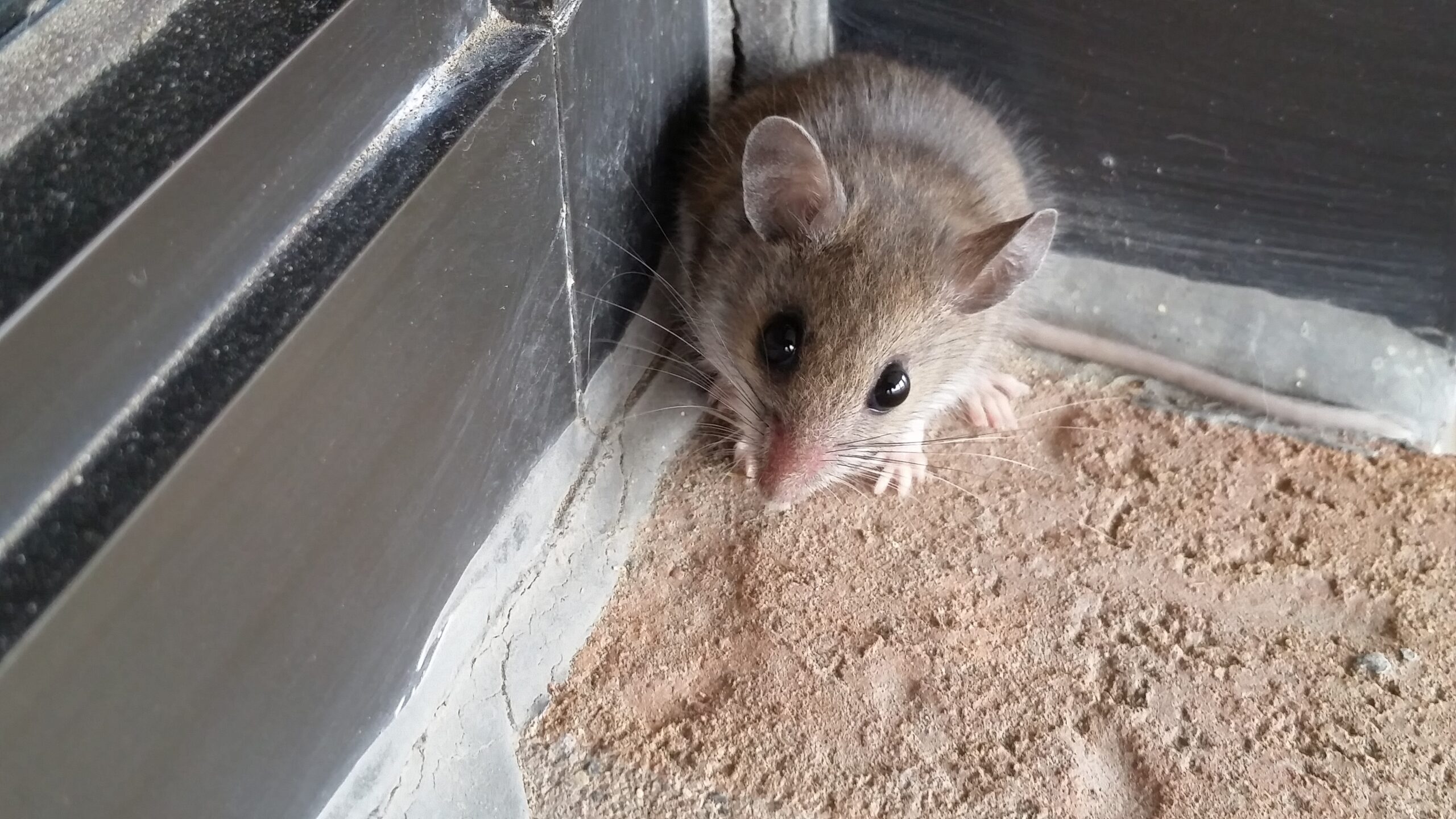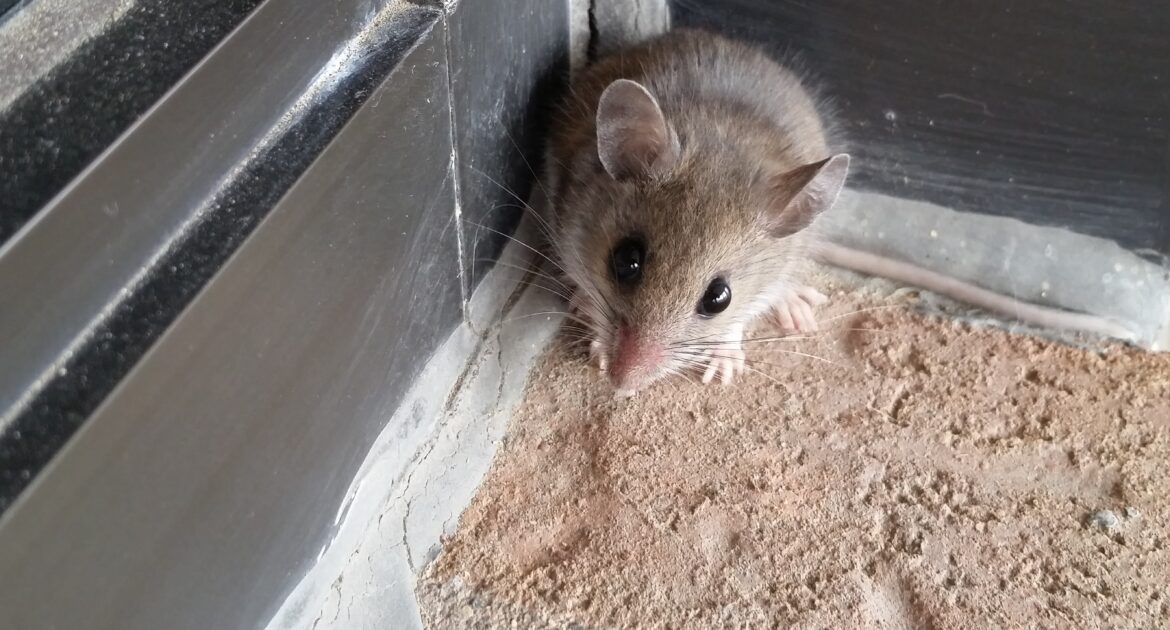A scurrying noise in the walls, chewed-up wires, and droppings scattered about are all telltale signs of a bad mice infestation. These tiny intruders can cause significant property damage and pose serious health risks to your family. From gnawed electrical wires that can provoke fire hazards to the potential spread of harmful diseases through their droppings and urine, severe mice infestations require prompt and effective action. But how do you get rid of mice without resorting to inhumane methods?
In tackling severe mice infestations, humane wildlife control stands as a paramount solution. Humane methods prioritize not only the removal of pests but also ensure a thoughtful approach to prevent their return. Our focus at Skedaddle Humane Wildlife Control in Denver is on safe, effective, and compassionate mice removal. We believe that addressing the root causes of infestations through humane techniques yields long-term results and fosters a healthier living environment.
Humane wildlife control is a crucial aspect of addressing severe mice infestations, as it not only resolves the immediate problem but also prevents future infestations and promotes a safe and healthy environment. This blog post will explore the benefits of humane wildlife control and lay out why using these methods is beneficial for both your home and the local ecosystem. Together, we will dive into practical steps, preventive measures, and the ethical considerations that come with humane pest management.
Prevents Inhumane Treatment of Animals
Treating animals with respect and dignity is a fundamental principle that should extend to all aspects of wildlife control. Even when facing severe mice infestations, it is essential to remember that these creatures are sentient beings that feel pain and distress. Humane wildlife control methods reflect a commitment to ethical standards and show empathy toward all living creatures. By treating mice with compassion, we also set a precedent for how we handle other wildlife and pests, promoting a more respectful and conscientious relationship with nature.
Unfortunately, several inhumane methods are often employed to control mice populations. These include poisoning and glue traps, which cause significant suffering to the animals. Poisoning leads to a slow and painful death, as the mice suffer from internal bleeding or organ failure. This method not only raises ethical concerns but also poses risks to other animals and pets that may come into contact with the poison.
Glue traps, on the other hand, are incredibly distressing for mice, as they become trapped and struggle to free themselves, often resulting in severe injuries or death from exhaustion, dehydration, or starvation. These cruel methods are neither necessary nor the most effective solution, making humane alternatives a preferable choice for addressing rodent infestations.
Reduces Risk of Disease Transmission
Mice are known carriers of several serious diseases, which can easily be transmitted to humans and pets. Two of the most concerning are hantavirus and leptospirosis. Hantavirus, which can be fatal, is primarily spread through contact with rodent urine, droppings, or saliva, either directly or through airborne particles. Leptospirosis is a bacterial infection that can lead to severe health issues such as liver damage, kidney failure, and even meningitis, typically contracted through contact with water or soil contaminated by infected mouse urine.
Humane wildlife control methods play a pivotal role in reducing the risk of disease transmission. These methods focus on the safe and stress-free removal of mice from your property. By using exclusion techniques, humane wildlife control experts ensure that mice are removed without causing them undue stress or harm. Minimizing stress is crucial, as stressed animals are more likely to urinate and defecate, increasing the risk of disease transmission.
Once removed, the mice are free to move to a more suitable environment far from human habitation, significantly reducing the chance of diseases spreading to you and your loved ones. This approach not only protects your health but also promotes a more humane and ethical method of dealing with wildlife infestations.
Minimizes Property Damage
Mice are notorious for causing a variety of property damage, primarily through their constant need to gnaw and burrow. These small rodents have strong incisors that can chew through almost any material, including wood, plastic, and even softer metals. This relentless gnawing often leads to serious structural damage, such as compromised wall studs and insulation. Electrical wiring is particularly vulnerable, with rodents frequently chewing the protective coatings, posing significant fire hazards that could endanger both life and property.
Another type of damage stems from the burrowing habits of mice. They often create nests within walls, attics, and crawl spaces by tearing up insulation, paper, and fabrics, creating unsanitary conditions. These nests can encourage the growth of mold and mildew, further degrading indoor air quality and potentially leading to health issues for the home’s occupants. Moreover, their urine and droppings can stain and deteriorate building materials, adding to the overall damage and the need for costly repairs.
Humane wildlife control methods are integral to minimizing such property damage. By focusing on the quick and humane removal of mice, these methods ensure that the animals are removed without the stress that prompts gnawing or burrowing. Utilizing exclusion techniques, humane wildlife control experts can efficiently remove mice from your property.
Promotes Long-Term Solutions
Addressing the underlying causes of severe mice infestations, such as food availability and shelter, is crucial for achieving long-term pest control solutions. Mice, like any other wildlife, are primarily driven by the need to find food, water, and safe nesting sites. If these essential resources are readily available in or around your home, infestations are likely to recur despite temporary control measures. Therefore, it is imperative to identify and mitigate these attractants to prevent future infestations.
Humane wildlife control methods excel in promoting long-term solutions by focusing on identifying and addressing the root causes of infestations. Experts in humane pest management start by conducting thorough inspections of your property to locate potential food sources, entry points, and hiding places that mice might exploit. This often involves sealing cracks and gaps in walls, floors, and foundations to prevent easy access. Additionally, securing food storage areas, eliminating clutter, and maintaining proper sanitation can significantly reduce the allure of your home to these pests.
Once these preventive measures are in place, humane control methods ensure that any remaining mice are safely removed. The process does not end there; humane control experts also provide ongoing monitoring and recommendations for maintaining a mouse-free environment.
Supports Environmental Sustainability
Environmental sustainability is paramount in preserving the delicate balance of our ecosystems and ensuring a healthy planet for future generations. Employing humane wildlife control methods plays a significant role in promoting this sustainability. Traditional pest control techniques often rely heavily on pesticides and other chemicals, which can have detrimental effects on the environment. These substances not only kill the target pests but also pose risks to non-target species—including beneficial insects, birds, and aquatic life—resulting in broader ecological imbalances.
Humane wildlife control methods support environmental sustainability by minimizing the reliance on such harmful chemicals. Exclusion techniques are used to effectively manage rodent populations without introducing toxins into the environment. This approach helps protect the biodiversity of local ecosystems by ensuring that non-target species are not inadvertently harmed. Additionally, by focusing on the prevention and management of infestations through habitat modification and proper sanitation practices, humane wildlife control reduces the long-term need for repeated chemical treatments.
Furthermore, humane control methods advocate for the safe removal of animals so they are free to move to more suitable habitats. This practice ensures that wildlife can continue to play their essential roles in the ecosystem, from seed dispersion to pest control, promoting a healthier and more balanced natural environment.
Ensuring a Safe and Humane Environment
At Skedaddle Humane Wildlife Control we are dedicated to providing humane and effective solutions for rodent infestations. Our experienced wildlife control technicians use humane methods to remove mice from properties, ensuring the animals are free to move on without harm and safeguarding your home against future infestations. By choosing us, you invest in a safe and healthy environment for your family.
In summary, humane wildlife control is the best approach to handling severe mice infestations. It promotes kindness, health, property safety, sustainability, and long-term solutions. Trust our mice removal in Arvada to effectively and compassionately manage your pest problems. Our team is committed to humane pest removal and prevention. Contact us to request a quote today. Let us help you secure a safer and healthier home environment.




